- Events
- Posted
Market opportunity to improve housing stock energy efficiency
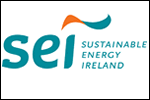
Given the decline in new build construction and the increasing demand for greater energy efficiency in existing homes, there is a major opportunity to bring about significant improvements in the energy performance of the existing Irish housing stock, according to Professor Owen Lewis, Chief Executive, Sustainable Energy Ireland (SEI).
Given the decline in new build construction and the increasing demand
for greater energy efficiency in existing homes, there is a major
opportunity to bring about significant improvements in the energy
performance of the existing Irish housing stock. That is according to
Professor Owen Lewis, Chief Executive, Sustainable Energy Ireland (SEI)
who was speaking at the opening of the ‘See the Light 2009 - Energy
Efficient Buildings, How Low Can We Go’ conference at The Ardilaun
Hotel, Co. Galway.
The conference is organised by SEI, in association with the Royal Institute of Architects of Ireland (RIAI), and will see the launch of new SEI Guidelines for Upgrading Existing Dwellings in Ireland to the PassivHaus Standard. These guidelines advise on the utilisation of construction products, materials and techniques that minimize waste, improve air quality, increase energy efficiency and protect the environment.
“Energy efficient building has moved into the mainstream for new construction in recent years. However with almost two-thirds of Irish homes built before the introduction of any building regulations, there is significant potential for many homeowners to radically improve the energy performance of their home. The Guidelines for Upgrading Existing Dwellings in Ireland to the PassivHaus Standard are an important introduction to the market as they provide the necessary guidance on how existing homes can upgrade to superior energy performance standards – meaning reduced running costs and increased comfort levels for homeowners.” said Professor Lewis.
“The residential sector in Ireland produces 24% of our annual CO2 emissions. However, cost-effective opportunities to reduce greenhouse gas emissions are most readily found in buildings. This and the recent extension of Building Energy Rating (BER) to all buildings being sold or rented, combines to provide an extraordinary impetus for pursuing significant improvements in the energy efficiency of existing housing stock.” continued Professor Lewis.
Delegates at the conference, including leading Irish and international building technology experts, are exploring the key principles and techniques in developing the ultimate low energy building and learning how renewable energy can be used cost effectively to provide healthy and ecological buildings in Ireland.
The conference concluded with a study tour to a local timber frame passive house built by pioneering Galway based company Scandinavian Homes.
The conference is organised by SEI, in association with the Royal Institute of Architects of Ireland (RIAI), and will see the launch of new SEI Guidelines for Upgrading Existing Dwellings in Ireland to the PassivHaus Standard. These guidelines advise on the utilisation of construction products, materials and techniques that minimize waste, improve air quality, increase energy efficiency and protect the environment.
“Energy efficient building has moved into the mainstream for new construction in recent years. However with almost two-thirds of Irish homes built before the introduction of any building regulations, there is significant potential for many homeowners to radically improve the energy performance of their home. The Guidelines for Upgrading Existing Dwellings in Ireland to the PassivHaus Standard are an important introduction to the market as they provide the necessary guidance on how existing homes can upgrade to superior energy performance standards – meaning reduced running costs and increased comfort levels for homeowners.” said Professor Lewis.
“The residential sector in Ireland produces 24% of our annual CO2 emissions. However, cost-effective opportunities to reduce greenhouse gas emissions are most readily found in buildings. This and the recent extension of Building Energy Rating (BER) to all buildings being sold or rented, combines to provide an extraordinary impetus for pursuing significant improvements in the energy efficiency of existing housing stock.” continued Professor Lewis.
Delegates at the conference, including leading Irish and international building technology experts, are exploring the key principles and techniques in developing the ultimate low energy building and learning how renewable energy can be used cost effectively to provide healthy and ecological buildings in Ireland.
The conference concluded with a study tour to a local timber frame passive house built by pioneering Galway based company Scandinavian Homes.
Last modified on Tuesday, 10 March 2009 01:39
Related items
-
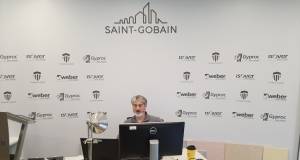 Saint Gobain launches online technical academy
Saint Gobain launches online technical academy -
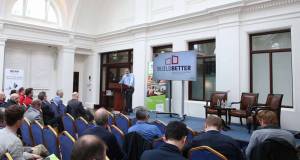 Saint-Gobain ‘Build Better’ roadshow continues
Saint-Gobain ‘Build Better’ roadshow continues -
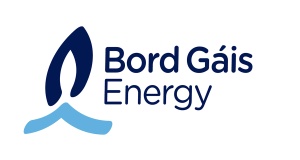 Bord Gáis calls it quits on home insulation business
Bord Gáis calls it quits on home insulation business -
 Two thirds of new Irish homes fail energy efficiency rules
Two thirds of new Irish homes fail energy efficiency rules -
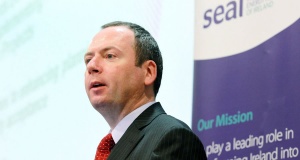 Brian Motherway named new chief executive of SEAI
Brian Motherway named new chief executive of SEAI -
 Government launches public consultation on building control
Government launches public consultation on building control

